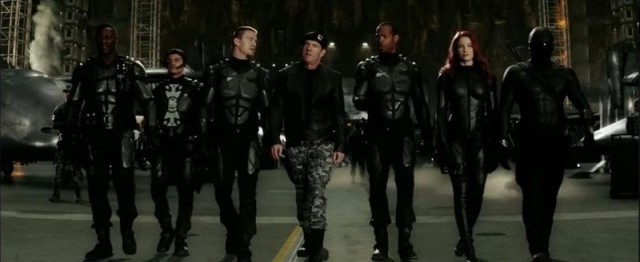 Transformers: Revenge of the Fallen
Transformers: Revenge of the Fallen (Dir: Michael Bay)
Wife: The food here is terrible.
Husband: Yeah, but look at the size of the portions!
For sheer moviegoing value, you can't beat Michael Bay, a director whose films are so bloated, busy, and full of heroic imagery that you get an entire summer's worth of blockbusters in one sitting. But just like eating a large bag of Doritos eventually leads to regret and self loathing, sitting through an entire Bay film brings on the hate and it's hard to live with yourself in the morning.
Where to start with this regrettable extension of the Transformers brand? Like the similarly incomprehensible Jerry Bruckheimer produced "Pirates of the Caribbean: Dead Man's Chest," "Revenge of the Fallen" is a globe-spanning bauble hunt involving shards of the All-Spark and the Matrix of Leadership all integral to the quest to cultivate much-needed Energon. With a script that is clearly an afterthought--a means to get us from Point A to Point B and to create an excuse for giant robots fighting--why make it all so complicated? All of these baubles have appeared in the Transformers mythology at one point or another, but does a franchise created solely to sell toys deserve slavish accuracy in its adaptation for the big screen? All that's gained is confusion and a few grins of recognition from devoted fanboys.
The Michael Bay aesthetic has not changed with his latest film. Every shot is a hero shot with a helicopter mounted camera view always preferable to a static close-up. In Michael Bay world there are no static close-ups. Every moment is as equally important as the next. There are no moments of reflection and calm before the action gears start turning once again. It's frankly exhausting and displays a profound lack of storytelling skill. His storytelling is further hobbled by his inability to establish visual geography. Visual geography allows a viewer to orient himself within the filmed space, understand the players involved and what's at stake. Bay just buys the largest fireworks display possible, lights it on fire and moves his camera from one point to another--never for longer than seven seconds.
"Revenge of the Fallen" also displays clumsy attempts at humor including dogs humping each other, robots humping humans, and robots with testicles. Every woman in the movie is either a super model or lunatic and the film trades in unnecessary stereotypes. The two worst offenders are the jive talking Skids and Mudflap who have gold teeth, monkey shaped faces, foul mouths, and can't read. Bay's world is an ugly, over caffeinated place.





